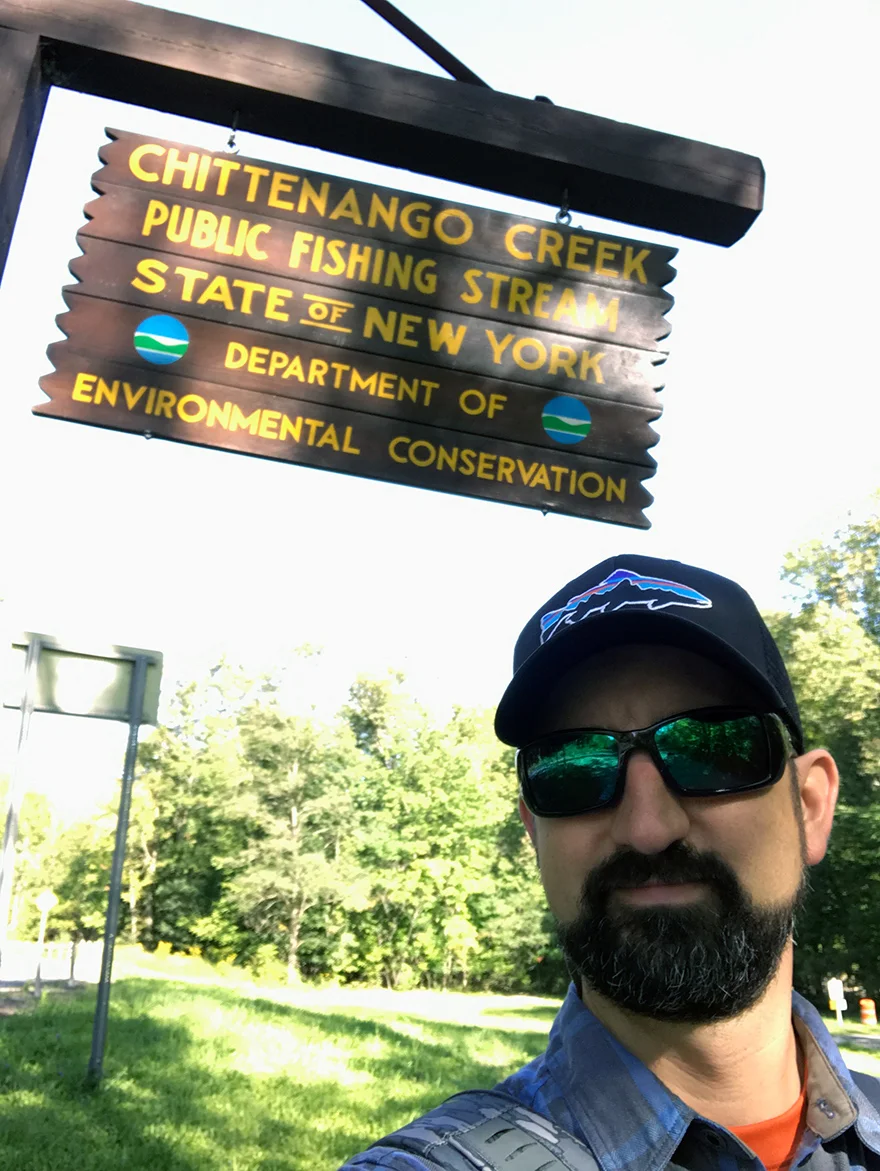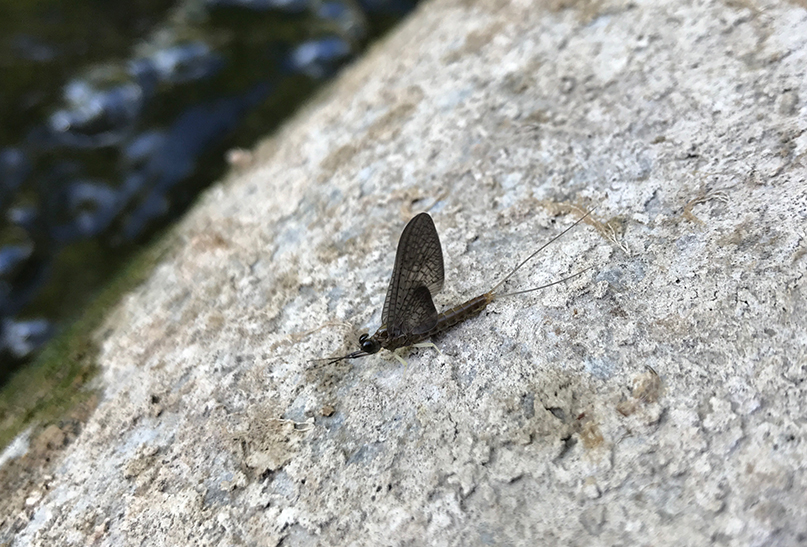Late last Friday night I made a last minute decision to head north and cross another New York trout stream off of my “streams I want to fish” list. I decided on New York because it was Labor Day weekend and the remnants of Tropical Storm Harvey were racing towards southeastern Pennsylvania. I knew Saturday was going to be gray skies and a rain jacket at home. In New York it would be sunny skies and a t-shirt. The stream I targeted was the Chittenango Creek, located in Madison County, just south of Oneida Lake. I learned about this body of water back in May when I was fly fishing Ninemile Creek. The Chittenango was rumored to have a healthy population of wild and stocked brown trout and I’d been wanting to get there for weeks.
I arrived in Cazenovia, New York around 7:00AM on Saturday morning. New York’s Department of Environmental Conservation (“DEC”) has published an easy to follow map that defines public fishing access points on the Chittenango. In New York they refer to the access points as Public Fishing Rights (“PFR”). A majority of the accessible water on the Chittenango Creek lies between the towns of Cazenovia and Chittenango. After having done some research on Google, I was able to determine that some of the best water lies along Rt. 13, just above and below Chittenango Falls State Park.
Standing next to the first PFR area on the Chittenango Creek.
I pulled off at the first marked parking lot and was the only vehicle there. When I got out of my truck I surprised at how chilly it was. The air temps were in the low 50s and I needed to break out my light thermal jacket for the first time this year. I walked down to the water and was surprised to see how little water was in the stream. The Chittenango is strewn with many boulders and rocks, and the water winds its way through them, making for short narrow runs and lots of pocket water. Although it didn’t offer a lot of depth, there was still plenty of water and cover for trout. I took the water temperature and it read 56 degrees. I went back to my truck and rigged up my Scott G2 and set-up my rod with a 9’-6X leader with 6X tippet. I decided to fish a dropper rig with two small nymphs. For my top nymph I fished #16 Olive Hare’s Ear and below it I dropped a #20 Epoxy Beadhead nymph.
My first look at the Chittenango Creek.
I started making my way downstream and finally found a good looking run to drift nymphs in. I refrained from using any weight, as the beads on the nymphs were enough to drop them in the current. After several drifts, I finally saw my indicator dart under the water and I hooked up with a healthy wild brown trout. It’s incredible how these fish can blend in with their surroundings.
The first Chittenango brown trout I hooked up with.
After catching and releasing my first fish, I continued working my way downstream. The further I walked, the worse the water looked so I turned around and worked my way back upstream. I double checked the map on my phone and realized the PFR areas were upstream, not downstream. As I worked my way upstream I hooked up with a couple of small brown trout that were hiding behind rocks in small riffles. Eventually I found a deep pool that was being fed by a small run and tailout. I cast my line upstream and had a brown trout attack my nymph almost immediately. Not long after hooking this first fish, I hooked another. As I was fighting both of these fish, the commotion of the fight sent other trout scurrying for cover.
After walking the rest of this section of PFR water I decided to drive to another part of the creek below the falls. This second area was defined on the DEC map as a Catch & Release Only section. This area lies downstream of the Chittenango Falls. If you fish the Chittenango you will find that not all parking areas are clearly marked. Sometimes you have to make your best educated guess by looking at the maps as to whether a pull off is public or private. I found a spot to park and walked down to the stream. This part of the stream is much different than the area I’d fished upstream. In this area the many boulders were gone and the stream resembled a standard east coast freestone stream with long riffles and runs. I started fishing below a large tree and tied on a Lightning Bug Nymph with a Frenchy dropped off the back. On my first cast I hooked up with a nice stocked holdover brown trout. I moved downstream, fishing four or five small waterfalls and pools. This area has some deeper water and is certainly capable of holding some larger fish. In the second waterfall pool I had several violent takes on my first several drifts. Each time I was unable to keep the fish on. Eventually I did hook up with two fish that I came close to landing, only to have them throw my nymph at the last second.
One of the mayflies I encountered on the Chittenango that I believe was a Slate Drake.
I walked a good mile and a half before deciding to stop and rest. As I was stopping to eat a snack, I observed several mayflies coming off the water. They appeared to be large Slate Drake Duns flying about and occasionally landing on my arm. There weren’t enough to get the trout really excited, but in a small pool ahead of me, I did witness a couple of fish keying in on bugs on the surface. I attempted to fool them with a dry fly and missed to small takes.
I spent the rest of my day working my way through the Catch and Release section. During the later afternoon I did witness quite a bit of surface activity. It appeared the fish were rising to Caddis flies or some other small insect. I tried several dry fly and terrestrial patterns and was unsuccessful in hooking any fish. I rounded out the afternoon with a few more small brown trout.
The Catch & Release Only section of the Chittenango where I witnessed many rises.
On my way back out of town I stopped and fished one of the first PFR areas upstream before the town of Cazenovia. Strangely enough this area of the Chittenango is dead water. I walked a good 200 yards and found nothing but warm water that was “baked out” for the summer. I found that the Chittenango is a diverse stream and water temperature and terrain varies significantly depending on where you are accessing the creek.
I really enjoyed my time fishing near Cazenovia, what a cool little town with great people. If you’re ever in the Finger Lakes area of New York, stop in and wet a line on the Chittenango Creek.







